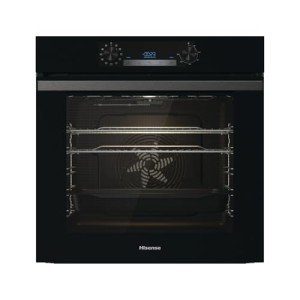The 10 Most Scariest Things About Oven Built In
페이지 정보
작성자 Esteban 댓글 0건 조회 4회 작성일 25-05-19 13:20본문
Understanding Built-in Electric Ovens: A Comprehensive Guide
In contemporary cooking areas, built-in electric ovens have actually become a basic function, offering convenience, performance, and a sophisticated integration into kitchen design. This article aims to notify homeowners and cooking enthusiasts about the benefits of built-in electric ovens, essential considerations when choosing one, and maintenance pointers to make sure long-lasting functionality.

What is a Built-in Electric Oven?
A built-in electric oven is created to be set up within kitchen cabinetry or walls, perfectly blending into the kitchen's architecture. Unlike standalone ovens, these models save floor space and can be positioned at eye level, facilitating simple access and monitoring while cooking.
Advantages of Built-in Electric Ovens
- Area Efficiency: These ovens use vertical area, making them ideal for smaller kitchens or those seeking to take full advantage of counter space.
- Visual Appeal: Built-in ovens offer a clean and contemporary appearance that boosts the kitchen's overall design.
- Ergonomics: They are set up at comfy heights, reducing the stress on the back and knees, specifically when loading or dumping dishes.
- Advanced Features: Many built-in electric ovens featured modern features like clever controls, convection cooking, and self-cleaning alternatives, which can make cooking much easier and more effective.
- Improved Functionality: Models frequently include additional features such as multiple cooking modes, timers, and temperature level probes.
Key Considerations When Choosing a Built-in Electric Oven
When selecting a built-in electric oven, several elements need to be taken into account to ensure it fulfills your cooking requires and fits within your kitchen layout.
Size and Capacity
Built-in electric ovens normally are available in various sizes. It's necessary to determine the designated space to ensure a proper fit. Here are common sizes:
- Single integrated fan oven: 24 to 30 inches large, suitable for a lot of cooking tasks.
- Double Oven: Two separate compartments, enabling you to cook several meals at various temperatures.
- Wall Ovens: Available in large sizes, fit for substantial cooking experiences.
Functions
Choosing functions that align with your cooking habits is essential. Consider the following options:
- Convection Cooking: Distributes heat evenly for consistent results.
- Smart Technology: Enables push-button control and pre-heating by means of mobile phone apps.
- Self-Cleaning: Simplifies maintenance and cleaning processes.
- Steam Cooking: Adds wetness to dishes for much better cooking outcomes.
Setup Requirements
Built-in electric ovens need adequate electrical wiring and ventilation alternatives. It's advisable to seek advice from experts during the setup phase to meet electrical codes and ensure safety.
Rate Range
The cost of built-in electric ovens can vary considerably from budget plan choices (₤ 600 - ₤ 1,200) to high-end models (₤ 2,000 and above). Consider your spending plan and cooking frequency when selecting.
| Rate Range | Features | Best For |
|---|---|---|
| ₤ 600 - ₤ 1,200 | Fundamental functions, manual controls | Casual cooks |
| ₤ 1,200 - ₤ 2,000 | Convection, wise technology | Serious home cooks |
| Above ₤ 2,000 | Premium materials, advanced features | Professional chefs or premium cooking lovers |
Upkeep Tips for Built-in Electric Ovens
Making sure that an electric integrated oven hob & extractor packages built in (read) runs successfully includes regular upkeep. Here are some practical tips:
- Regular Cleaning: Wipe down the door and inside the oven after each use to avoid grease accumulation.
- Self-Cleaning Cycle: Utilize the self-cleaning function periodically (if readily available). Follow the maker's instructions for optimal efficiency.
- Examine Seals and Gaskets: Inspect the door seals for wear and tear to maintain cooking effectiveness.
- Calibrate Temperature: Regularly check and adjust the oven's temperature for precision cooking.
- Expert Servicing: Schedule annual upkeep talk to qualified professionals, particularly for sophisticated designs with numerous electronic parts.
Frequently Asked Questions (FAQs)
1. Are built-in electric ovens more effective than standard ovens?
Yes, built-in electric integrated ovens typically have better insulation and features like convection cooking that can prepare food faster and evenly, conserving energy.
2. Can I install a built-in electric oven myself?
While some handy people may choose to try a DIY setup, it is recommended to work with a professional to ensure safe and compliant setup.
3. Just how much power does a built-in electric oven use?
Usually, built-in electric ovens take in between 2,400 to 5,000 watts, Oven Built In depending upon the model and features. Always refer to the producer's specs for precise figures.
4. Do built-in electric ovens require special kitchen cabinetry?
Yes, built-in electric ovens require custom cabinetry or wall enclaves that support their weight and allow for proper ventilation. Guarantee that the kitchen cabinetry adheres to setup standards outlined by the manufacturer.
Built-in electric ovens are an important addition to any modern kitchen, providing an array of functions that make cooking more practical and enjoyable. By comprehending the benefits, selection requirements, and maintenance requirements associated with these ovens, consumers can make educated choices that align with their culinary requirements and lifestyle choices.
댓글목록
등록된 댓글이 없습니다.